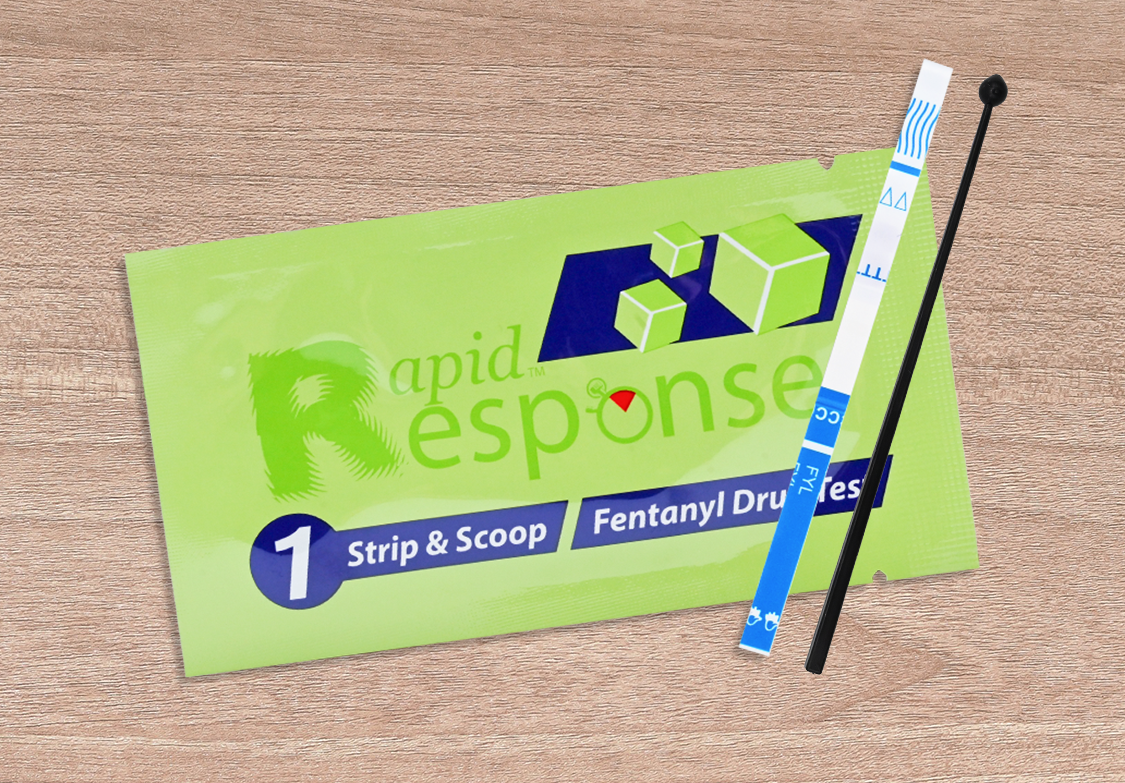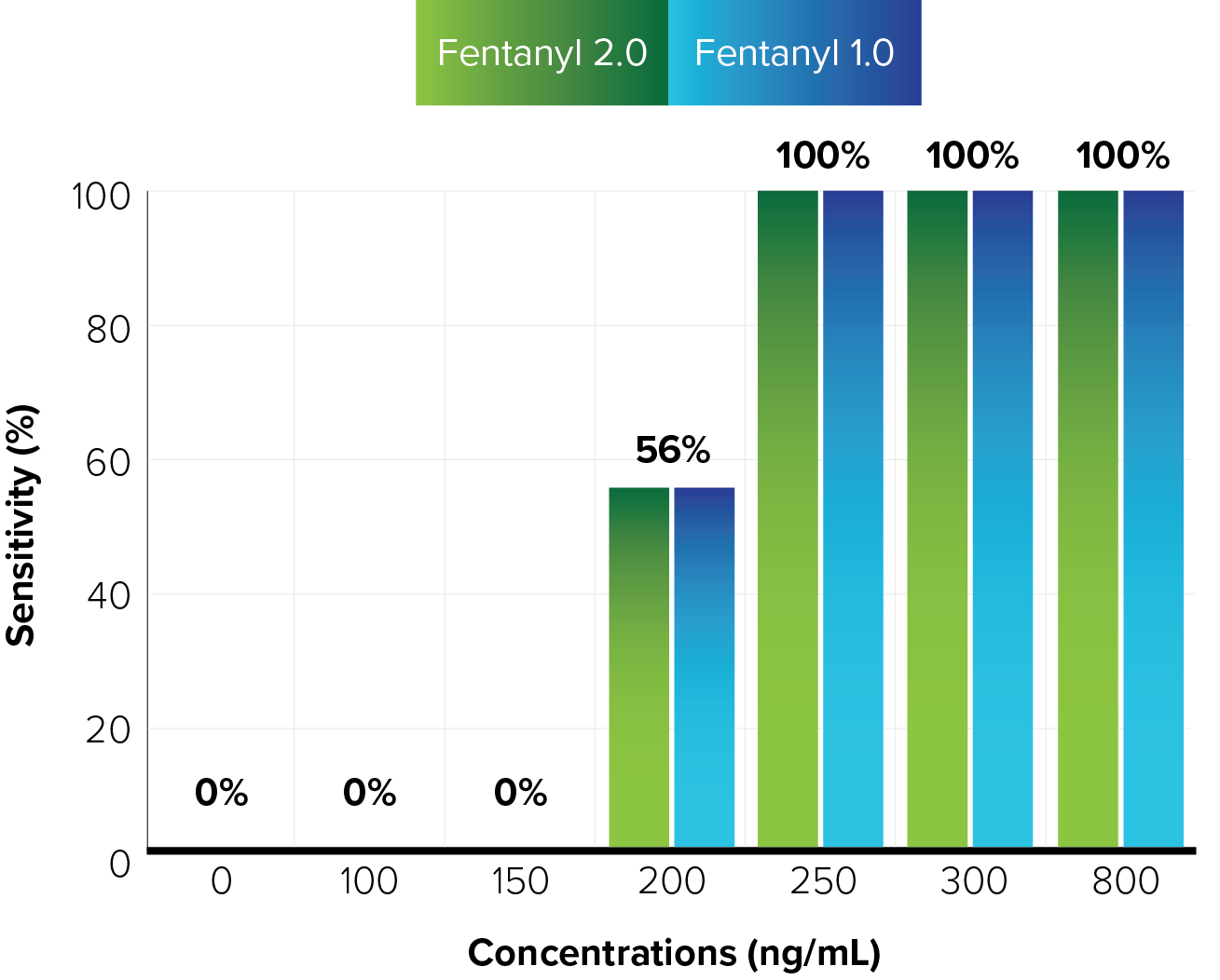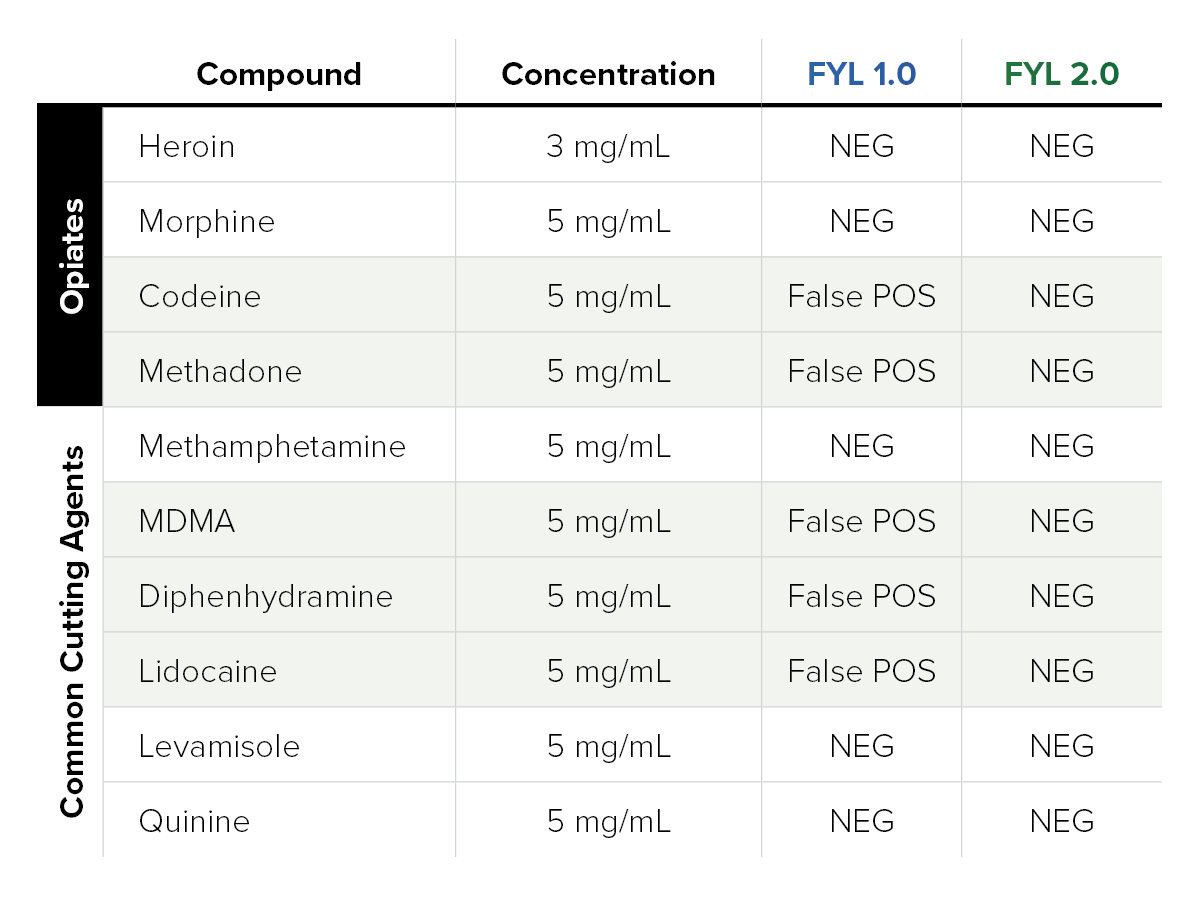|
Highlights:
|
Fentanyl is a highly potent, synthetic opioid related to the phenylpiperidines.1, 5 Fentanyl is approximately 100 times more potent than morphine and 50 times more potent than heroin.2 Fentanyl is commonly prescribed for moderate to severe pain relief.3 After continuous injection of fentanyl, the user may experience protracted opioid abstinence syndrome, such as ataxia and irritability, leading to addiction.6, 7
Due to the potency of fentanyl, fentanyl poses an extremely high overdose risk especially when used with other drug substances.4 Serious adverse effects of fentanyl can lead to opioid use disorder.1 As of 2018, fentanyl and its analogs are responsible for the majority of drug overdose deaths in the United States.6, 7
The presence of fentanyl and its use in unregulated settings pose significant concerns due to the drug’s high potency, as even small amounts of fentanyl can cause an overdose. The CDC has reported an increasing trend of opioid-related overdoses correlating to the rise of fentanyl and fentanyl-related analogues in the illicit drug supply. Fentanyl is currently listed as a Schedule II narcotic, while fentanyl-related analogues are currently listed as Schedule I narcotics by the US DEA.
Several modifications have been applied to the chemical structure of fentanyl, namely to the carbonyl group and benzene rings, resulting in a series of fentanyl analogues. Many of these analogues have similar potencies to fentanyl, however, in some cases, the modifications result in compounds with significantly heightened potency (e.g., carfentanil).

As pioneers in drug checking, BTNX revolutionized harm reduction with the original Rapid Response Fentanyl Test Strip (FTS)—the most researched fentanyl test strip on the market. Trusted by universities, public health departments, and harm reduction initiatives worldwide, it set the standard for detecting fentanyl in drug substances.
While the original test strip was widely recognized as the best in the market, we listened to the feedback from extensive studies and research. A few limitations were identified, and we saw an opportunity to innovate further.
The Result? We’re proud to present the Rapid Response Fentanyl Test Strip 2.0—a groundbreaking improvement that addresses previous limitations while maintaining our legacy of reliability, accuracy, and innovation.
- Built on the trusted foundation of the most researched test strip.
- Enhanced specificity to eliminate cross-reactivities with substances such as Diphenhydramine, METH, MDMA, Lidocaine, and Levamisole.
- Improved sensitivity to detect a wider range of fentanyl analogs.
- Enhanced usability, now the only test strip that comes with a microscoop conveniently included in the same pouch.
At BTNX, we’re committed to staying ahead—because saving lives and supporting harm reduction efforts deserves nothing less than the best.
Fentanyl and fentanyl analogues that are detected below 100 μg/mL:
| Compounds | FYL 1.0 | FYL 2.0 |
| Fentanyl | 200 ng/mL | 200 ng/mL |
| Acetyl Fentanyl | 150 ng/mL | 150 ng/mL |
| Butyryl Fentanyl | 700 ng/mL | 700 ng/mL |
| Carfentanil | 5000 ng/mL | 5000 ng/mL |
| p-Fluoro Fentanyl | 200 ng/mL | 500 ng/mL |
| Furanyl Fentanyl | 500 ng/mL | 500 ng/mL |
| Ocfentanil | 250 ng/ml | 500 ng/mL |
| Valeryl Fentanyl | 700 ng/ml | 1000 ng/mL |

The Rapid Response Fentanyl Test Strip (2.0) is the only fentanyl test strip in the market that does not cross-react with diphenhydramine (a common cutting agent), MDMA, and Methadone.

NEG - Negative, POS - Positive
The Rapid Response Fentanyl Test Strip (2.0) now features a more user-friendly design and includes an additional tool in the kit to enhance harm reduction testing. These enhancements addresses the need for precise sample measurement and more accurate drug screening.
| C and T labeled on the strip to clearly show where the Control and Test lines are located. | |
| Each individually packaged test strip is paired with a Microscoop. | |
| Strip version (2.0) printed on the packaging for easy identificaiton and a QR code to resources and tutorial videos. |
-QRC-V1.0-27062024-02.png)
Positive – Fentanyl Detected: Only one colored line appears in the control region (C). No apparent colored line appears in the test region (T).
Negative – Fentanyl Could Not be Detected: Two colored lines appear on the membrane. One line appears in the control region (C) and another line appears in the test region (T).
Invalid: Control line fails to appear.
Please refer to the product insert for more details.
- Baselt RC. Disposition of Toxic Drugs and Chemicals in Man. 2nd ed. Davis: Biomedical Publications; 1982.
- NIDA. Fentanyl DrugFacts. National Institute on Drug Abuse website. http://nida.nih.gov/publications/drugfacts/fentanyl. June 1, 2021 Accessed April 5, 2023.
- Gilman AG, Goodman LS, Gilman A, eds. Goodman and Gilman's The Pharmacological Basis of Therapeutics. 6th ed. New York: Macmillan; 1980.
- NIDA. Drug Overdose Death Rates. National Institute on Drug Abuse website. https://nida.nih.gov/research-topics/trends-statistics/overdose-death-rates. February 9, 2023 Accessed April 5, 2023.
- International Narcotics Control Board. Report of the International Narcotics Control Board for 2009[R].New York:UN, 2010
- Lane JC, Tennison MB, Lawless ST, et al. Movement disorder after withdrawal of fentanyl infusion. J Pediatr, 1991, 119(4):649-651
- Dominguez KD, Lomako DM, Katz RW, et al. Opioid withdraw in critically ill neonates. Ann Pharmacotherm, 2003, 37(4):473-477
- Lieberman, M. (n.d.). FTS lot characteristics public facing draft. Google Docs. https://tinyurl.com/LotResults

 Canada
Canada